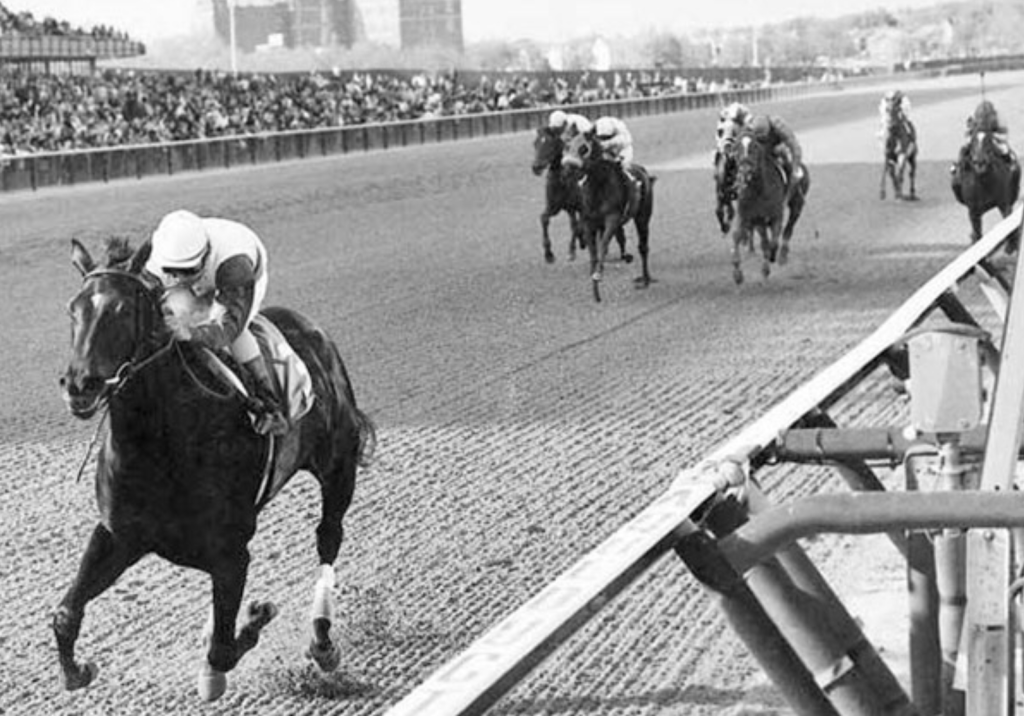
Should the spacing or timing or distances of The Triple Crown races be changed or even discussed?
Here we go again. With the defection of Rich Strike from this year’s Preakness Stakes, once again the cry has gone out to change the Triple Crown. Rich in tradition and difficult to achieve, the Triple Crown has largely remained untouched – minus a few exceptions such as the 2020 Covid crisis. But what if the time between races was lengthened and the distance of the Belmont Stakes shortened, would it produce more Triple Crown winners? Would the public embrace this new, watered down version of the Triple Crown? To find out, we only have to look to the Filly Triple Crown for answers.
When Sir Barton won what would eventually be known as the Triple Crown in 1919, there was no official name for the series and his accomplishment went unheralded at the time. Ditto for the first two winners of the original Filly Triple Crown which consisted of the Kentucky Oaks, the Pimlico Oaks (renamed the Black-Eyed Susan Stakes in 1952) and the Coaching Club American Oaks. Back then the fillies actually competed at the same three tracks under a similar time frame as the colts. When Wistful won the series in 1949 and Real Delight in 1952, neither were recognized as Triple Crown winners at the time but both were awarded Champion Three-Year-Old Filly honors.
In 1961, the New York Racing Association established its own version of a Filly Triple Crown to be held – where else? – New York. Finally the fillies had an official Triple Crown to call their own, albeit an easier version. The NYRA Filly Triple Crown was comprised of the one-mile Acorn Stakes, followed by the Mother Goose Stakes and concluded with the Coaching Club American Oaks. At first it was run at both Aqueduct and Belmont Park then eventually only at the latter. Also, the distances of each race in the series got progressively longer whereas the middle jewel of the colt’s version was the shortest in the series. Unlike the colt’s Triple Crown there was even a bonus for sweeping the series – $25,000. The time frame for the Filly Triple Crown was originally five weeks then extended to six. Race distances fluctuated. The Mother Goose started out at 1 1/16 miles in 1957, then was increased to 1 1/8 miles from 1959 to 2010, only to be shortened back to 1 1/16 miles in 2011. But the race that has been tinkered with the most was what supposed to be the filly’s version of the Belmont Stakes – The Coaching Club American Oaks. The CCOA has seen its distance go from 1 3/8 miles to 1 ½ miles to 1 ¼ miles to its current 1 1/8 miles. So much for the “Test of a Champion.”
In 1968 America’s “Tiny Tigress” Dark Mirage became the first filly to sweep the NYRA Triple Crown, followed by Shuvee the next year. Wins by the popular Chris Evert in 1974 and the legendary Ruffian in 1975 gave the series much-needed publicity. In 1979 the over-achieving Davona Dale won not just the NYRA version but also the Kentucky Oaks and Black-Eyed Susan Stakes, making for two Triple Crown sweeps. In 1985, Mom’s Command became the final horse to win the Filly Triple Crown. While there was still a three-race series for fillies, it was now called the “Triple Tiara” to prevent confusion with the colt’s Triple Crown. It was under this Triple Tiara rebranding that Open Mind captured the series in 1989. From 1971 to 1990, the Filly Triple Crown/Tiara had remained unchanged in both time frame and race distances and was still respected enough that its winners were honored with Eclipse Awards. Only Shuvee remained as the sole Triple Crown winner not to receive Champion Three-Year-Old Filly honors, losing to the great Gallant Bloom. Gallant Bloom had won on both turf and dirt and had beaten Shuvee all three times that they’d faced each other.
In 1993, Sky Beauty won the Triple Tiara with the CCOA scaled back to 1 ¼ miles and a leisurely time frame of approximately one month between each race. Despite capturing the Alabama Stakes and finishing out the year with five wins and one second in seven starts, she lost the Eclipse Award to Hollywood Wildcat who had five wins in nine starts. Yes, Sky Beauty had finished off the board in the Breeders’ Cup Distaff which Hollywood Wildcat won but was that one race worth more than all three of the Triple Tiara? Apparently so, at least to the Eclipse Award voters. Imagine a colt winning the Triple Crown and the Travers Stakes and not being voted Best Three-Year-Old. You can’t. Why? Because every single colt who has won the Triple Crown was awarded with an Eclipse Award that same year. Justify never raced again after the Belmont and not only won Champion Three-Year-Old but Horse of the Year as well. By making the Triple Tiara easier, did it cause it to lose face in the eyes of the voters?
In 2003, the Acorn Stakes was out of the Triple Tiara and the Alabama Stakes at Saratoga was in with $2 million bonus for anyone who swept this new series. Nobody did. In 2005, the bonus was discontinued and in 2006, the Filly Triple Tiara returned to its original format of the Acorn, Mother Goose and CCAO. In 2010, it was the Mother Goose Stakes that was shoved aside to make way once again for the Alabama. As a final insult, the Mother Goose was downgraded to a grade two race in 2017. Currently, the Triple Tiara is comprised of the one mile Acorn Stakes at Belmont Park, the 1 1/8 mile Coaching Club American Oaks and the 1 ¼ mile Alabama Stakes at Saratoga with one month between each race. So now that the Triple Tiara has been made easier, why is it that Sky Beauty still remains the last winner of a triple anything for fillies? For starters, you don’t hear trainers of top fillies say that they’re targeting a Triple Tiara sweep. In fact, one big win in the Breeder’s Cup Distaff or a Triple Crown race against colts is more likely to sew up an Eclipse Award than winning all three races of the Triple Tiara.
So what would happen to the original Triple Crown if it befell the same fate as the Triple Tiara? Would it too lose respect? Would spacing out the races and making them shorter bring about more winners? It certainly hasn’t for the fillies. Would it be fair to lump any future winners of this new series in with those who had won it in its original time frame and at the longer distances? If indeed the original Triple Crown is changed then I hope that the Powers-That-Be take a page out of the filly’s book and call it the Triple Jewels or Super Tri or anything else. Just don’t call it the Triple Crown.
Photo: Ruffian, Coglianese Photos, NYRA





